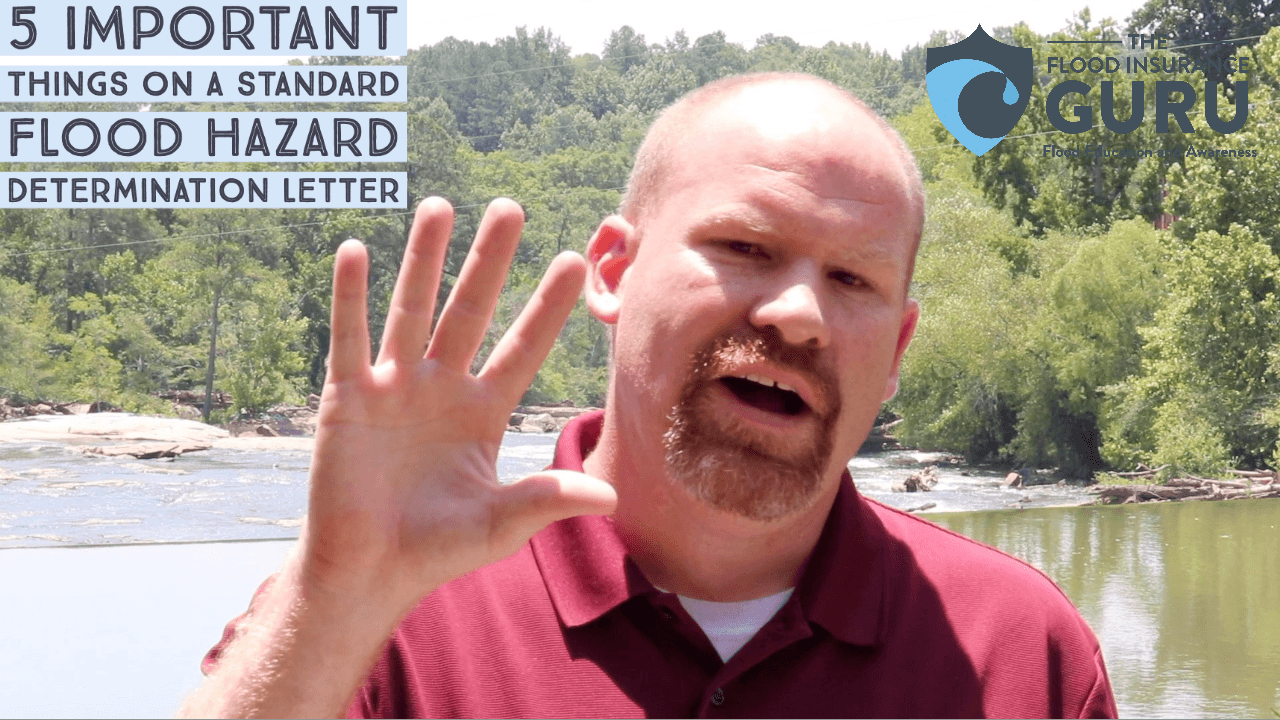Search for topics or resources
Enter your search below and hit enter or click the search icon.
January 31st, 2020
2 min read
By Chris Greene

We hear from insurance agents, realtors, and mortgage companies everyday about the standard flood hazard determination letter.
The first thing they normally say is I have no idea what this form means or they confuse it for an elevation certificate.
So in this episode of The Flood Insurance Guru Podcast we want to discuss this form and the following 10 things it shows.
While alot of the information on this document are standard things like the address, city, and county. There are also 5 things that can play a vital role in flood insurance rates.
Having the right community name for your flood insurance is crucial. Each community is going to have different flood insurance rates. While flood insurance is based on location and elevation its also based on the community rating system.
This system was put in place to help communities that go above the minimum flood plain management requirements. When this occurs communities can receive discounts through the National Flood Insurance Program ranging from 5% to 40%.
So it could be that your community does not get as big of a discount as the community down the street. Any confusion on community names could be a big hit on your wallet.
The map panel date might be just as important. This shows you when the panel last updated. This can play a major role in flood insurance rates if the panel was recently updated. Your property might qualify for special newly mapped flood insurance rates based on the panel date. This could save you hundreds in flood insurance premiums.
If the panel date is within the last 12 months then this is something you definitely want to pay attention to. We had this happen to a client in Alabama and another one in Iowa who were bother over charged by $1500 because the insurance company did not look at the panel date.
If a property has had a LOMA or LOMC it means that the flood map has been changed for that particular structure. This could mean at some point the property was removed from a high risk flood zone and put into a low risk flood zone.
Sometimes these do have to be revalidated so if your property has ever had one of these done you do want to pay attention to when it was done.
The next area which is flood zones tells you if the property is in a special flood hazard area or is in a low risk area. This is the difference between flood insurance being required and it not being required.
The last part to pay attention to is the flood insurance availability part of the certificate. This is going to tell you a few things.
It will tell you first if the community is part of the National Flood Insurance Program. Then it will tell you if it is part of the emergency program or regular program.
Remember the National Flood Insurance Program offers different coverages in these two programs. If the community is not part of the National Flood Insurance Program it will tell you that flood insurance is not available through this particular program.
So that's 10 things the standard flood hazard determination form shows and more importantly 5 things you should pay close attention to.
So if you have questions about this form or any other flood insurance questions then please make sure to visit our website. You can also check out our daily flood education videos on our YouTube channel or Facebook page.